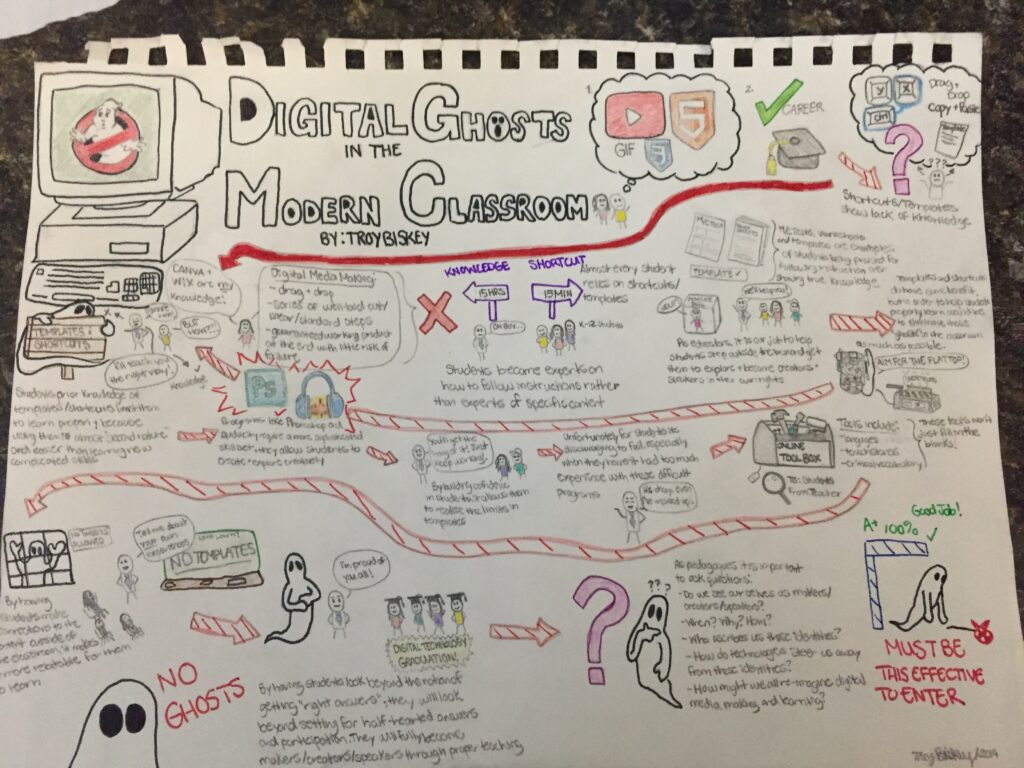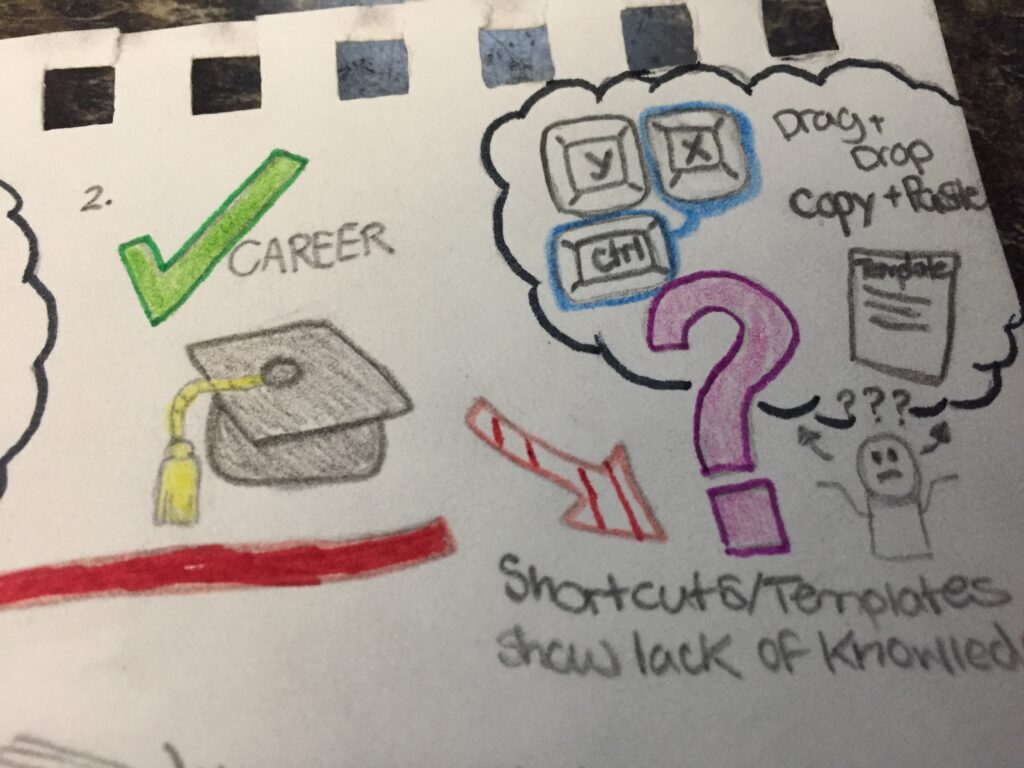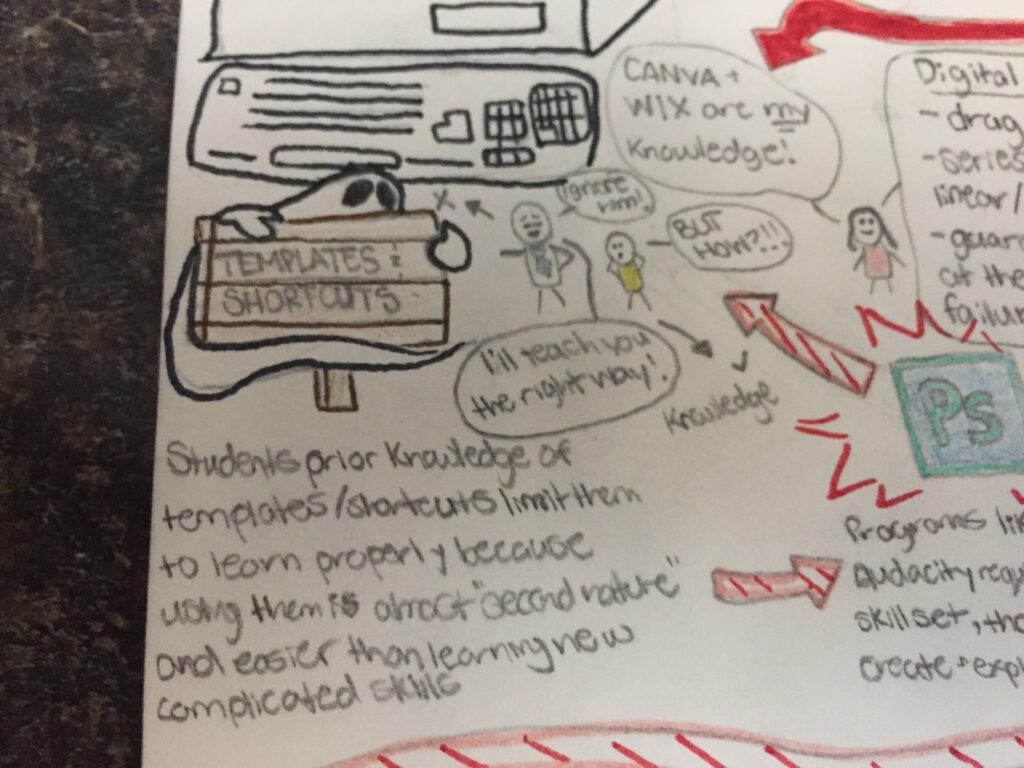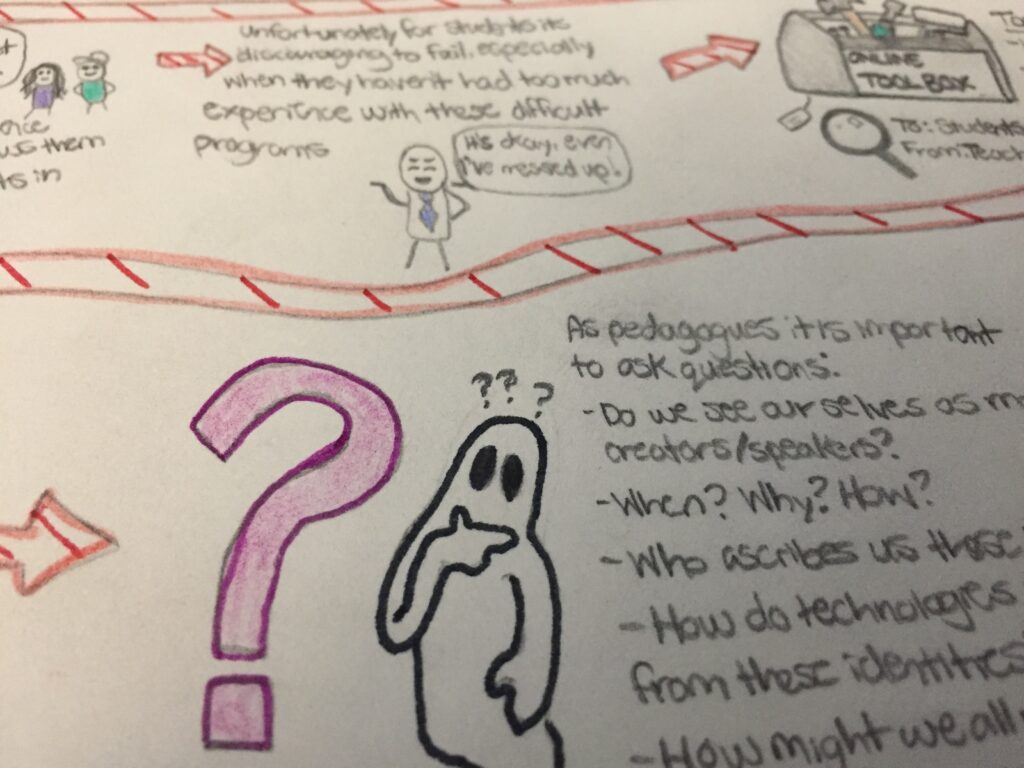
For this assignment, I read Ashley Hinck’s article Digital Ghosts in the Modern Classroom http://hybridpedagogy.org/digital-ghosts-modern-classroom/. I found this article to be informative and intriguing, and she brought up some very interesting points about these “ghosts” that I never considered before. Coming into the classroom, students have a lack of knowledge when it comes to digital making because these students have been influenced by shortcuts and templates for many years of their schooling careers. These templates eliminate the need for creative expression and these students find some difficulty when it comes to using more complicated steps in creation.

I agree with Ashley in that these shortcuts and templates that are given to students throughout the K-12 career (and sometimes past that) limit the ability to be creative and to “think outside the box”. I never considered that these templates and shortcuts almost train students in a way to rely on “drag-drop methods” and when it comes time to learn properly they become lost. I know from my personal experience I would use shortcuts all the time because they’re easier to use instead of making constant mistakes with the possibility of a non-working final product. I remember coming into university and using programs such as Final Cut Pro and Audacity that required a higher level of skill to use… and I was lacking those skills. I found it frustrating to use because I wanted an easy way to get a final working product, but now I can confidently say that I appreciate learning those skills as they will help me in the future and my teaching career ahead.

Although I do believe that shortcuts and templates are a large impact on creative student learning and experimentation, I also would consider that they do have their place in the classroom at times and can be a benefit. Ashley Hinck stated that students are held back by these shortcuts/templates, and that they can cause students to be weary or apprehensive about taking risks. These “ghosts” in a way diminish confidence in the students because making mistakes can be discouraging and I would agree with that, however, I believe that students have almost been trained to be scared because these “ghosts” haven’t been used to their most effective advantage. I would say that shortcuts/templates/multiple choice tests/fill in the blanks/etc… are used sometimes too often in the classroom which results in students relying on them for a “safety net” seeing as it’s easier to fall back on this net rather than go through a series of trial and error. I believe that limiting the use of these “ghosts” and integrating more trial and error learning would be more of a benefit in student’s learning, thus providing them a concrete foundation of more experiment based learning.

Reading this article was informative and intruiging as I have stated before and I did agree with most of what Ashley Hinck said, although I would say that one of the hardest parts of the assignment would be creating an artifact in a creative way. This was the first sketchnote that I have ever made, I enjoyed making it but it was challenging. There was a lot of information given in this article and I found it a little difficult to orchestrate through mostly imagery but I wound up using some text in my sketchnote, perhaps a bit too much! If I were to try this again I would get rid of most of the text/sidenotes and would incorporate more dynamic imagery. I was also a little intimidated to try and take on the online infograph because I am horrible at using technology… but maybe next time I’ll step out of that comfort zone and give it a shot!
